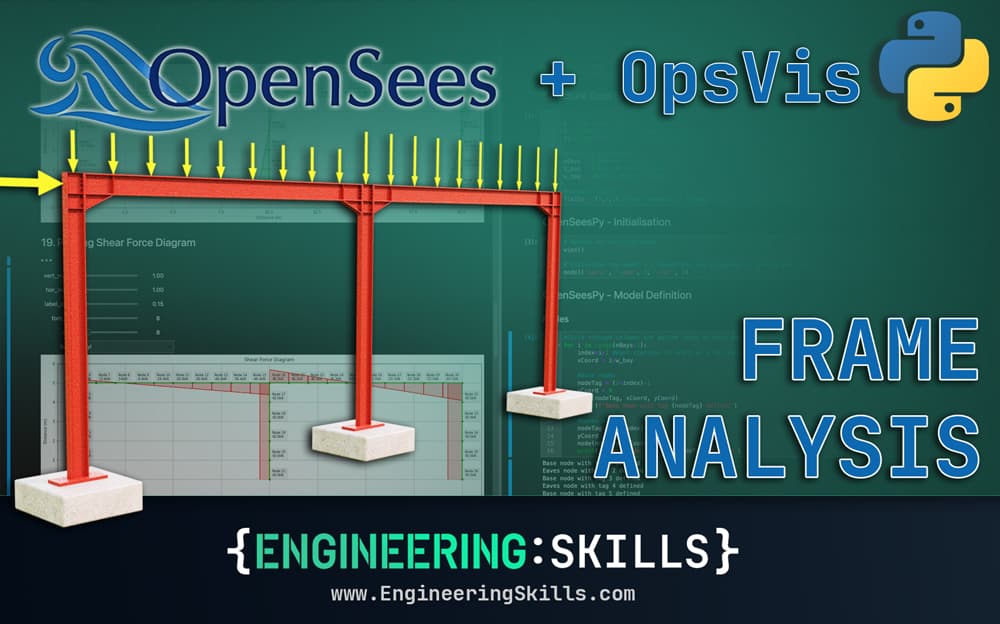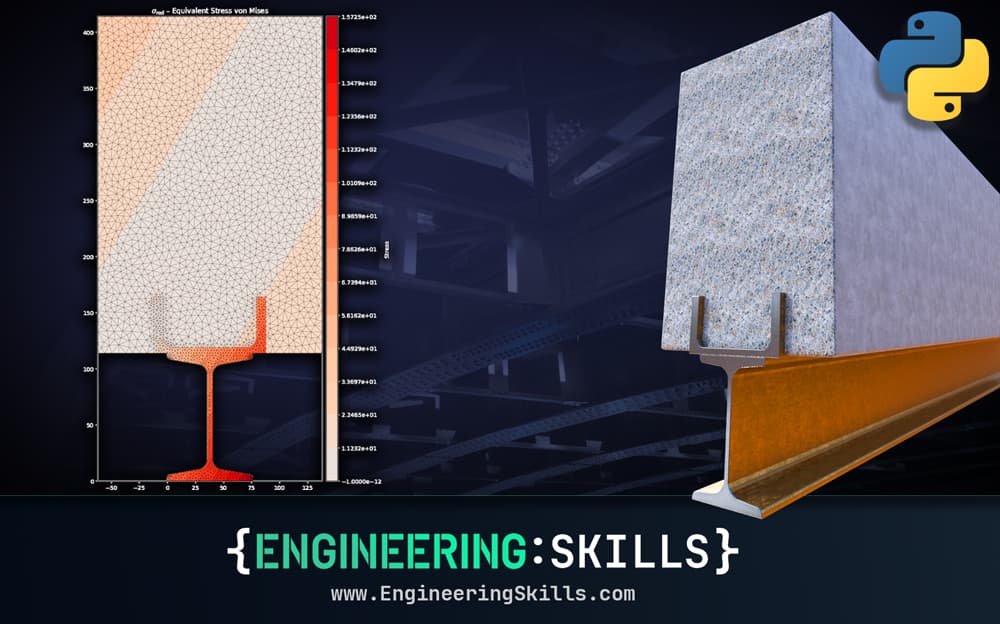Fundamentals of Computational Fluid Dynamics
![[object Object]](/_next/image?url=%2Fimages%2Fauthors%2Fsumit_verma.jpg&w=256&q=75)
Welcome to this first tutorial in our series on computational fluid dynamics (CFD). Over this series of tutorials, we aim to equip you with a understanding of the theoretical underpinnings of CFD as well as the working knowledge of the simulation process and common tools, namely OpenFOAM.
CFD simulation is an incredibly powerful tool that allows us to simulate fluid flow. It’s used throughout almost all fields of engineering. Within civil and structural engineering, we often use CFD to simulate
- the flow of air around structures such as buildings and bridge decks or,
- the flow of liquids such as water around bridge piers or other aquatic structures.
From this simulation process, we can derive the environmental forces acting on our structures, which in turn allows us to design for these forces. This process is crucial for understanding how these structures will perform in real-world conditions.
In addition to understanding the environmental loads on structures, CFD simulation can also help us understand how airflow is disrupted by the built environment. This has given rise to the study of the pedestrian-level wind environment and how it is affected by large-scale structures, particularly in urban environments.
CFD can be used to study occupant thermal comfort, energy efficiency and pollution dispersion among many other things! So, suffice to say, CFD, while being quite a specialist analysis tool, is very much in demand in today’s engineering design offices.
In this tutorial, Dr Sumit Verma will begin by first reviewing some of the very fundamental concepts and key terminologies from Fluid Mechanics. Then, we take a closer look at the governing partial differential equations describing fluid flows.
By focusing on the foundational concepts of CFD and deriving the key equations from first principles, you will develop a solid base for understanding the practical aspects of CFD to come later. In future tutorials, we will delve deeper into practical CFD and the tools we use to simulate fluid flow.
Over to Dr Verma!

1.0 Fluid Mechanics versus Computational Fluid Dynamics (CFD)
Computational Fluid Dynamics (CFD) is a branch of Fluid Mechanics, which primarily deals with solving the governing partial differential equations of fluid flow using numerical techniques such as the Finite Difference Method (FDM), Finite Volume Method (FVM), Finite Element Method (FEM), Lattice Boltzmann Method (LBM), Smoothed Particle Hydrodynamics (SPH), etc.
During the solution process, the governing partial differential equations are discretised into a large system of linear equations (the size of the linear system depends upon the mesh considered for the CFD simulation), which are then solved using computers as the size of the linear system is too large to be solved by hand for practical flow problems encountered in real life scenarios.
In a broader sense, a CFD solution process typically involves the transformation of a physical problem into a mathematical model, which comprises of certain key components such as
- () a discretised computational domain, composed of numerous small control volume cells or computational stencils,
- () the governing partial differential equations of fluid flow, which describe the behaviour of the fluid within the computational domain,
- () the boundary conditions, which sets some constraints as to how the fluid should behave near the computational domain boundaries so that the formulated mathematical model depicts a real-life scenario as closely as possible, and
- () the initial conditions; these are the values assumed by the field variables (variables that we solve for using CFD such as the velocity, pressure, etc., which are a function of both space and time) at the start of a CFD simulation process. Alternately, the initial conditions can be construed as something that is required to advance the solution forward in time for the time-marching problems such as the unsteady flows.
Before delving deeper into the topic of CFD, it is important to familiarise oneself with some common concepts and terminologies from Fluid Mechanics, which form the foundational base for Computational Fluid Dynamics.
The distinction between Fluid Mechanics and Computational Fluid Dynamics is generally made in the context that Fluid Mechanics, in general, refers to the principles of Mechanics applied to fluid flow phenomena that govern and describe the fluid motion, which encompasses () Theoretical Fluid Mechanics () Computational Fluid Mechanics as well as the () Experimental Fluid Mechanics, whereas when we talk about CFD, we are primarily referring to the theoretical/computational aspect of Fluid Mechanics.
In this tutorial, we begin our study of computational fluid dynamics by first reviewing some of the very fundamental concepts and key terminologies from Fluid Mechanics. Then, we take a closer look at the governing partial differential equations describing fluid flows. In future tutorials, we will delve deeper into practical CFD and the tools we use to simulate fluid flow.
In CFD, a physical system is often modelled as an Open System (or a Control Volume) whereas the fundamental conservation laws are usually described using the System (Closed System) approach. So, it is first important to distinguish and differentiate between the Closed and the Open systems.
All Access Membership
Learn, revise or refresh your knowledge and master engineering analysis and design
Access Every Course and Tool
- Over 1103 lectures & over 225 hours of HD video content
- Access member-only 'deep dive' tutorials
- Access all downloads, pdf guides & Python codes
- Access to the StructureWorks Blender addon + updates
- Packed development roadmap of courses & tutorials
- Price Guarantee – avoid future price rises as we grow
- Priority Q&A support
- Course completion certificates
- Early access to new courses
Featured Tutorials and Guides
If you found this tutorial helpful, you might enjoy some of these other tutorials.
Building a Parametric Frame Analysis Pipeline with OpenSeesPy and OpsVis
We’ll build a script to perform 2D elastic frame analysis and use OpsVis for fast visualisation of model behaviour

Dr Seán Carroll
Understanding Tresca and von Mises Elastic Failure Theories
Go from the fundamentals of elastic failure theory to implementing section analysis in Python using sectionproperties

Julian Haudek
Simulating crowd vibrations using the Duhamel Integral
Learn about the Duhamel Integral & how it can be used to simulate crowd-induced vibrations in Python

Dr Seán Carroll



